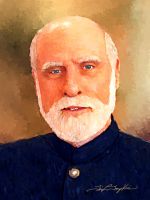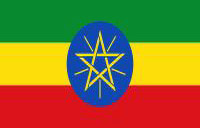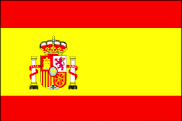
Vinton Cerf Ph.D.
National Medal of Technology and Innovation 1997
One of two Fathers of the Internet. TCP/IP protocols. Internet
Architecture. Chief Internet Evangelist, Google. Interplanetary Internet.
Living Legend.
"Brilliant, indescribably enthusiastic, humorous, happy, treats people
extremely well. It would be nice to go to work every day and work with
people like Vint Cerf." – R.V. Nagaveni, Founder, Ganga Library.
Maverick/Youth
Vinton Cerf, in the late 1950s, wore a coat and tie throughout high school. It was his way of being rebellious.
He moved from Stanford to the Defense Department’s Advanced Research Projects Agency in Washington, D.C. To buy new clothes, his wife took him to Saks Fifth Avenue. His shopping included a white seersucker. Those days three piece suits were popular and it became his trademark. They are not used much nowadays. He holds the opinion that though the three piece suits may cause one to be overdressed in some occasions, they have the benefit of being able to be worn in a wide range of circumstances.
At the time Cerf commenced working in Google, there were 5,000 employees. He had hoped to be able to encourage more people to wear suits. Later, Google employed 25,000 people. Only one other person wore a suit. Cerf felt he failed! - Source: Rich Karlgaard, Forbes Staff

Photo Courtesy Vinton Cerf. Painting Tim Tompkins - PaintHistory.com
Name: Vinton Gray Cerf
Birth: 23 June, 1943, New Haven, CT
Institution: Corporation for National Research Initiatives
Award: For creating and sustaining development of Internet Protocols and continuing to provide leadership in the emerging industry of Internet technology
Subject: Internet Technology
Biography
Books
CV, Extensive/Publications
Defining Moment/Regret
Family
Founder
Harassment
Health
History of Discovery - Brief History of the Internet
History of Discovery - History of the Internet Answers to Questions
Hobbies
Humor/Quotations
Images
Maverick/Youth
Patents
Personality
Thought Process
Videos
Education: B.S. in Mathematics, Stanford University; M.S. and Ph.D. in Computer Science, UCLA. Van Nuys High School, CA
Ph.D. Advisor: Gerald Estrin
Dissertation: Multiprocessors, Semaphores, and a Graph Model of Computation (1972)















